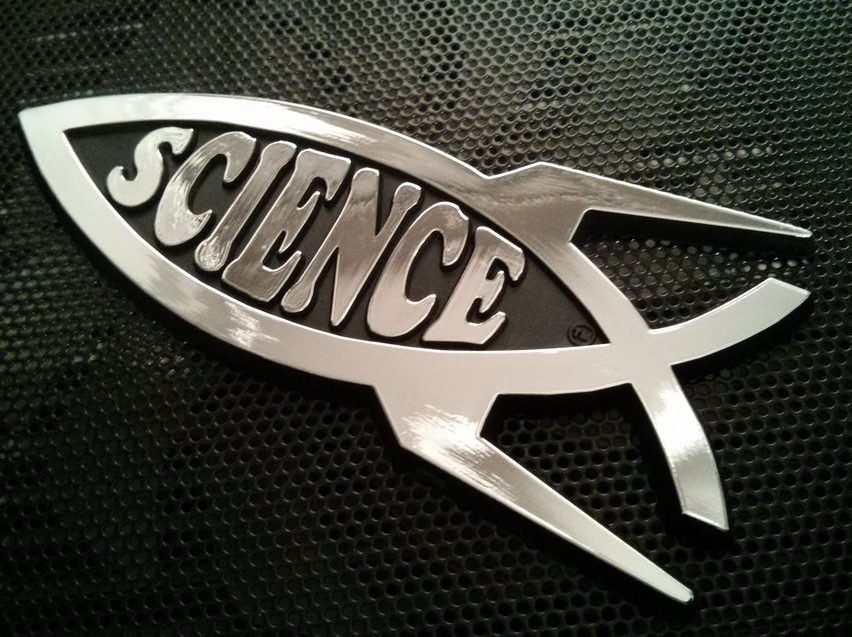
Revelatory Evolution and Cosmological Creation Tales: when science is presented like a religion
By Will Mason-Wilkes

When you sit down to watch a science documentary you’re probably expecting to learn something about science. You might even be hoping to pick up a few facts to impress your colleagues at the office or your friends at the pub. However, along with these nuggets of knowledge, a science programme will also present an image of science. This image is a product of the way science is talked about in the show and suggests something more fundamental about how scientific knowledge is produced and the status or quality of this knowledge. My research has focused on these images or representations of science in non-fiction programmes, and I argue that in some programmes science is presented in a way which makes it look like a religion.
Like our understanding of many things, our understanding of science and scientists is shaped to some degree by the way they are represented in mass media. The vast majority of people aren’t scientists, and after they leave school, most of their knowledge and understanding of science is shaped by these media representations. How science is represented in non-fiction programmes is particularly important because viewers approach these programmes believing (more so than when watching a fictional programme) that what they are seeing is a true-to-life image of science. Put simply, you’re likely to take the representation of science in an episode of the BBC documentary strand Horizon more seriously than the science presented in Star Trek. However, non-fiction programmes can only ever provide a partial representation of science. A documentary can never tell the whole truth – it has to adopt a perspective on reality, and condense that messy reality into a neat hour-length programme. This means that it is very important to understand the aspects of science which non-fiction programmes choose to focus on.

The image of science a programme presents is a product of how science is talked about in the programme, what is visually presented alongside this talk, and what other sounds (music, special effects etc.) are heard. In combination, these three elements can create very different impressions of science. In programmes aired on the same network, even the same channel, the different way the talk, visual and soundtrack elements are combined can lead to entirely contrasting representations of science. In the two programmes I analysed, Bang! Goes the Theory and Wonders of Life, both first aired on the BBC in 2013, I found that Bang presented a very secular image of science whilst Wonders presented science more like a religion.
Representing science like a religion involves attributing particular characteristics to science and scientific knowledge. In Wonders scientific knowledge is presented as certain. There is little to no suggestion that scientific understandings may be incorrect, incomplete or will be changed or adapted over-time. In this way science is made to seem dogmatic – a core of beliefs are set-in-stone, immutable or unchanging. This core of beliefs forms the material out of which a definitive creation narrative (usually involving the big-bang and evolution) is constructed. This creation story is complete and all-encompassing, moving from the beginning of time to the present day. No alternative scientific theories are alluded to. Importantly, this creation narrative locates humanity at the pinnacle of creation; our consciousness, and the scientific knowledge we have produced with our conscious minds, means we are the most significant thing in the universe.
The way this story is told in Wonders, through an engaging script, epic visuals, and a rousing soundtrack, heightens its impact. Visual sequences presented alongside the voiceover describing the scientific creation narrative illustrate the story. The birth of the universe is shown using fantastical computer-generated imagery, interspersed with images of wildlife in all its diverse forms, visually connecting living things in a grand story of creation. The emotional impact of this story, its power to create moments of transcendence in its audience, which provide a sense of meaning, is heightened through the use of emotionally resonant music – orchestral and choral scores that swell and crescendo as the story is told. This contrasts directly with the secular representation of science, such as depicted in Bang where scientific knowledge is shown to be incomplete, provisional and open to change and revision, and there is no mention of an overarching creation story.
How scientific knowledge is shown to be produced also defines a representation as secular or religious. When represented like a religion, scientific knowledge is portrayed as produced easily by anyone, with minimal skill or expertise required. Only the desire to know, and a few pieces of house-hold equipment, can reveal fundamental truths about the universe. Rather than being the product of skilled work, completed by members of expert communities, who negotiate and define the truth of their experimental work through social processes (as in the secular representation), scientific knowledge is revealed simply and easily by a compliant natural world when presented like a religion.
This kind of representation is reinforced through visual elements used in Wonders. You won’t see hi-tech equipment or teams of scientists working in labs when science is presented like a religion – this would suggest that it takes specialist equipment and a community of experts who know how to use this equipment in order to produce scientific knowledge. Instead, scientific knowledge is represented as producible anywhere, by anyone, using just about anything, be that in a desert with a fish tank or in a bar in the jungle with some vodka and washing-up liquid.
Representing science like a religion is problematic for a number of reasons. For one, it is inaccurate. Scientific processes can’t be undertaken by anyone, the knowledge these processes produce aren’t certain and can’t provide a definitive creation narrative through which the world is made meaningful. Scientific knowledge is produced by experts using skills acquired over long careers and the knowledge produced is communally negotiated and only ever provisional. The inaccuracy of the religious representation, however, has some potentially more severe consequences for democratic societies. If people understand science to be certain and perfect, then they will not hold it properly to account, nor engage with it in ways which could help the development of both science and society. For a democratic society to function properly, science must be understood in a way which more closely resembles its secular representation. Science understood as a fundamentally human, provisional, yet expert endeavour can be properly scrutinised, but also respected, rather than blindly accepted on faith.
Will Mason-Wilkes is a Research Fellow at the University of Birmingham. His PhD is titled Science as Religion? Science Communication and Elective Modernism. For more see his Research Profile.
Follow Will on Twitter: @WillMasonWilkes

